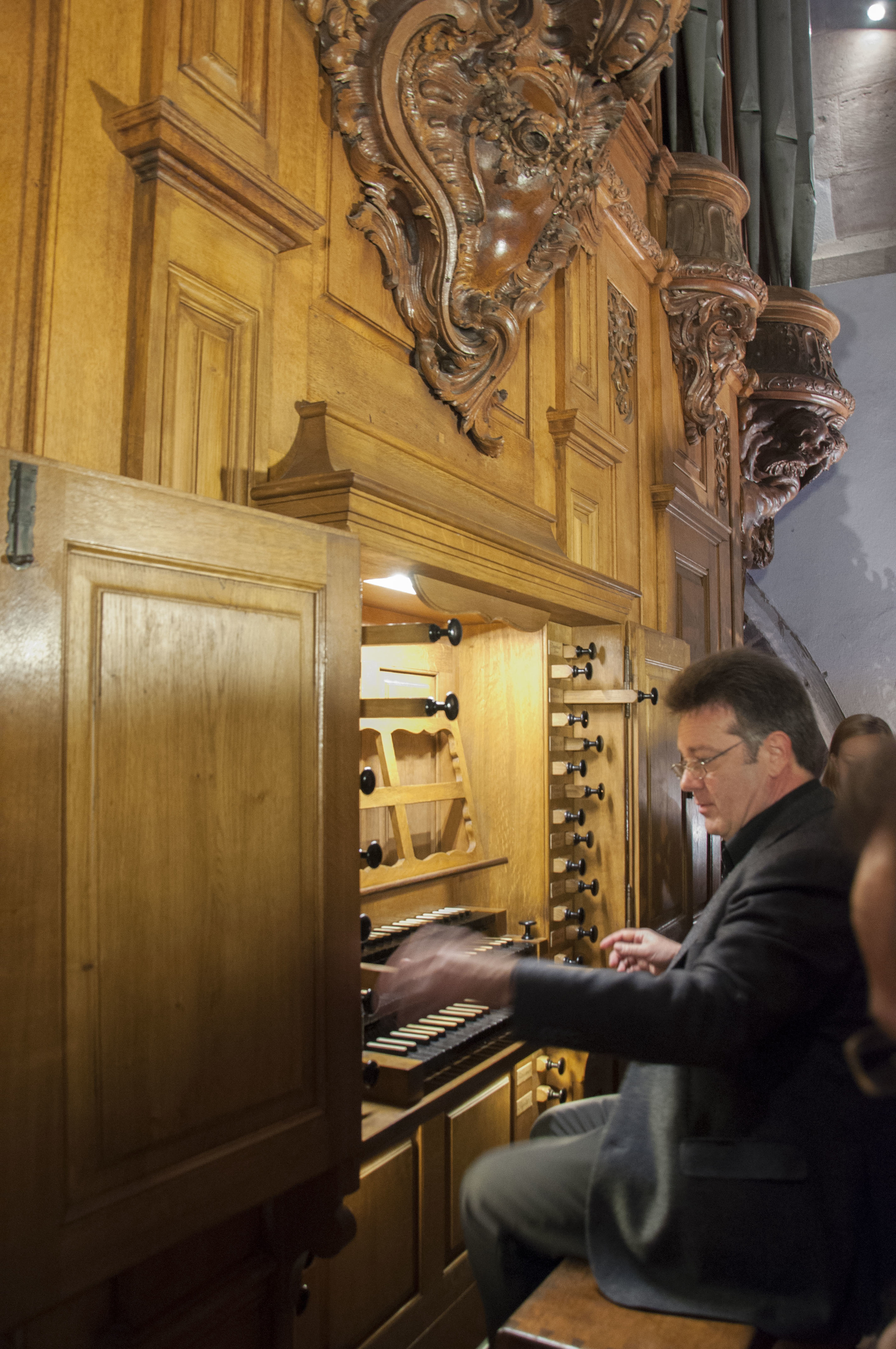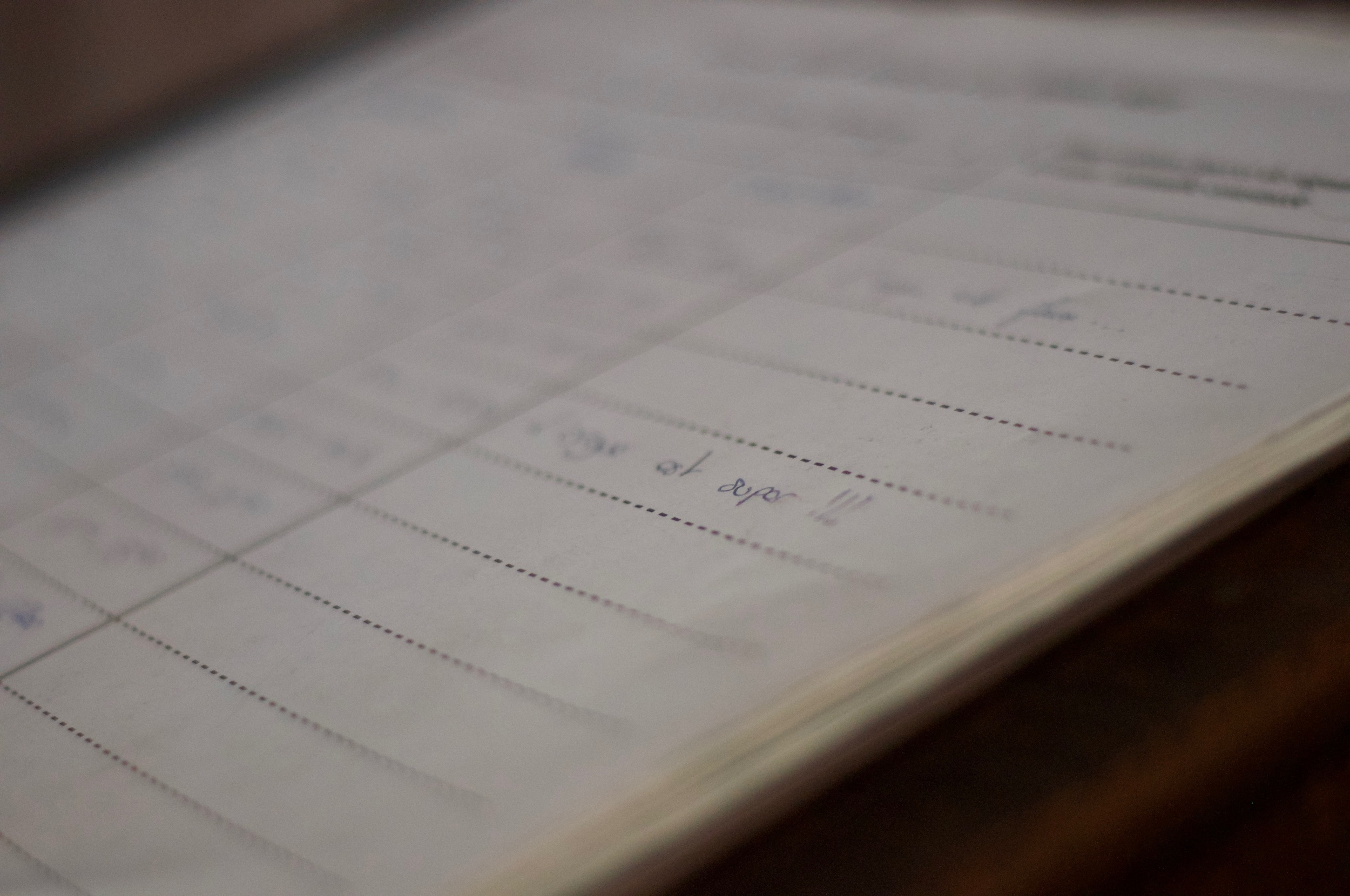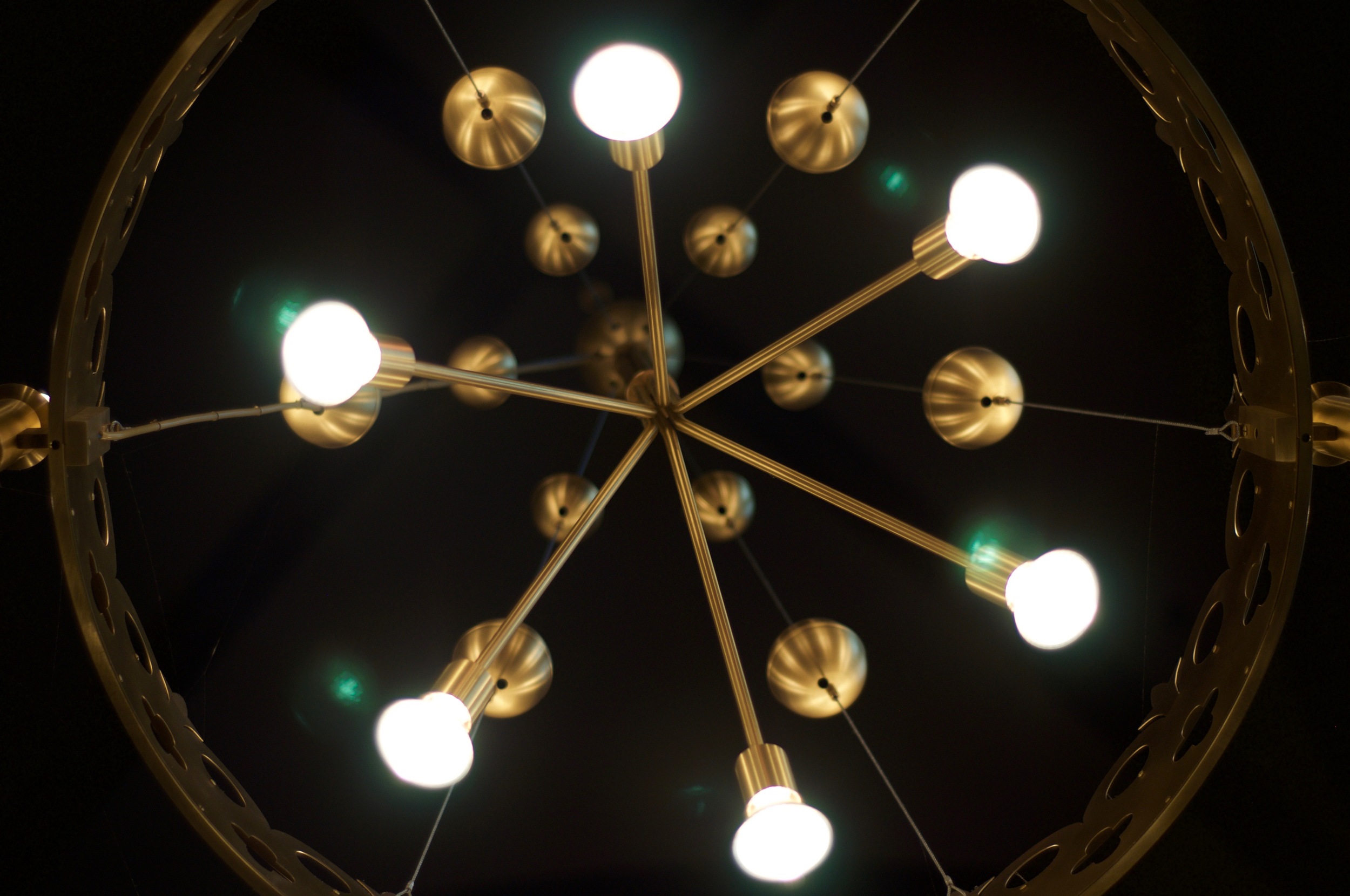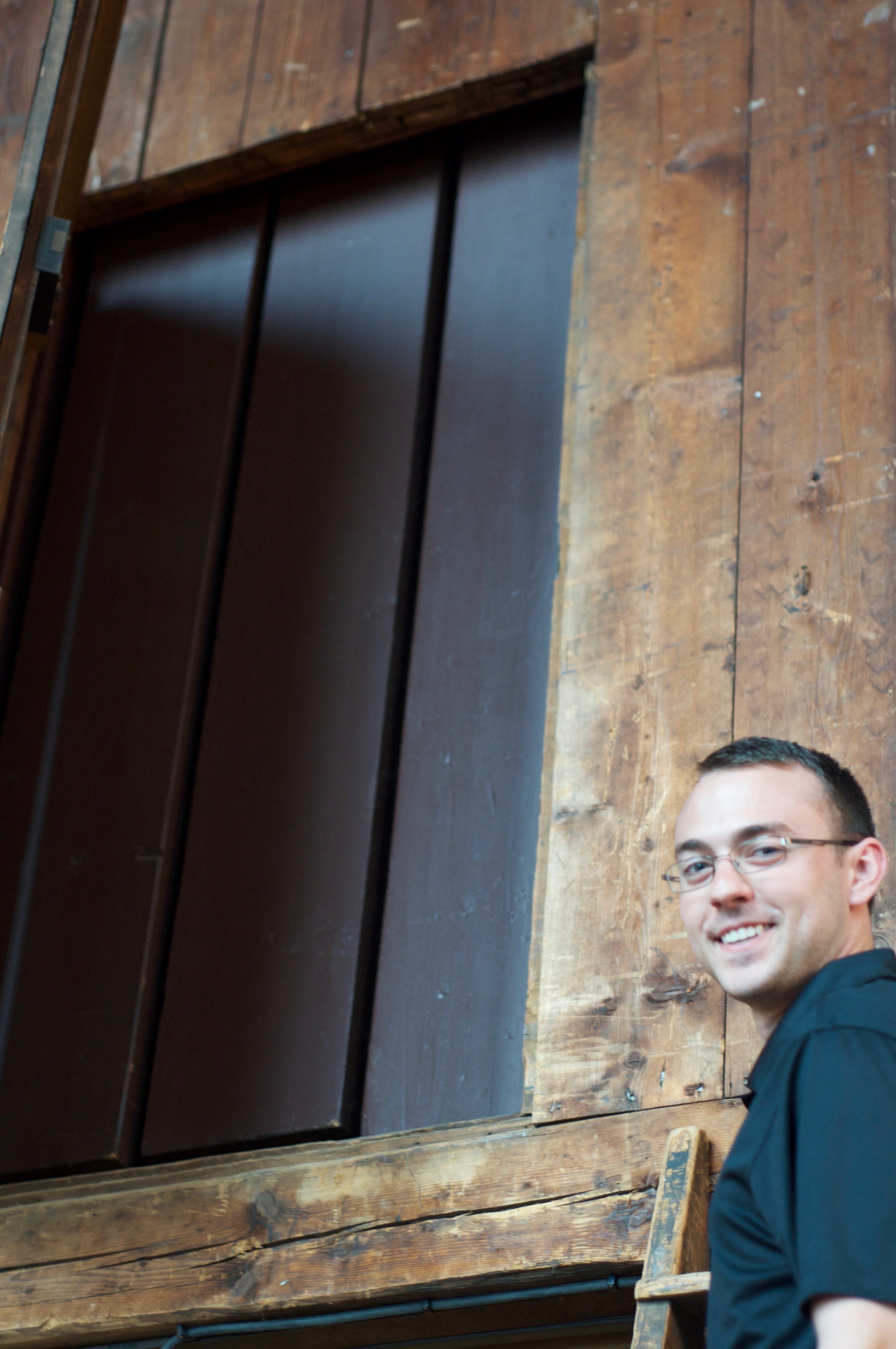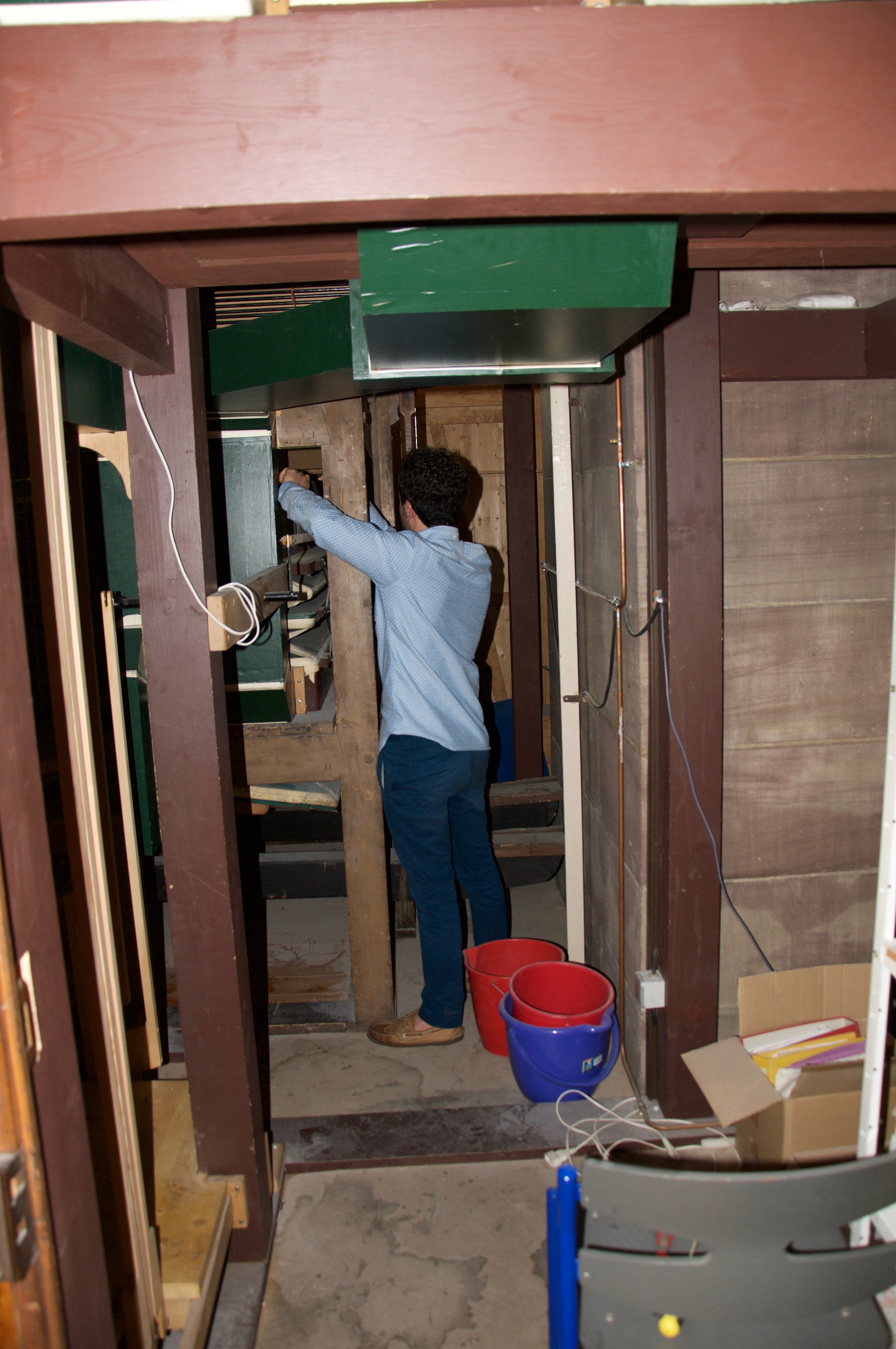Day 3: L'orgue est super!!!
by Noel de Sa e Silva
Despite still suffering from the effects of jetlag, we all managed to get on the road by 7:30 am. We were heading across the border to Strasbourg to see two organs: the 1741 Johann Andreas Silbermann in St. Thomas and the 1877 Merklin in Temple Neuf. In order to avoid the Stuttgart traffic, we took the scenic route through the Schwarzwald – the Black Forest. We eventually caught up to a large, slow-moving truck, which was impossible to pass on the perpetually winding road. Even though this slowed us down considerably, it allowed us to appreciate the beauty of the dense, imposing woods, whose mythical qualities were only heightened by the rain and fog.
When we finally arrived at St. Thomas in Strasbourg, we were greeted by Daniel Maurer, who introduced us to the organ, recounting its history (Mozart played on it in October 1778 and deemed it to be one of “the two best organs that Silbermann has here [in Strasbourg]”) and demonstrating its colors. We immediately noticed the incredibly sweet quality of the flutes, as well as the general warmth the organ had to offer. After playing for us for a few minutes, Daniel invited us up to try the organ. For the slow movement from Bach’s Trio Sonata in C (BWV 529), Laura used some of the organ’s unusually beautiful flutes, which amplified what was already an especially thoughtful and moving performance. At the end of our session, we wished only to have more time with the organ and its stunningly sweet sounds.
Laura Gullett plays Bach at St. Thomas, Strasbourg.
After eating lunch in a cute restaurant on the river, we walked through the charming streets of Strasbourg towards our next destination: the Temple Neuf. Although we had just eaten a full meal, Jennifer and I kept eyeing the many boulangeries and pâtisseries along the way, so eventually, before reaching our destination, the two of us snuck off into one to buy a couple éclairs, which we brought back and shared with the group.
At Temple Neuf, we met with Guillaume Nussbaum, who let us in and told us a little about the organ. The builder, Merklin, was a competitor of Cavaillé-Coll (whose organs we visited in Paris during our trip two years ago), and although his style was slightly different, this organ’s sounds provided a remarkable example of the French Romantic style. Guillaume generously gave us over four hours of his time, most of which was spent on a masterclass. David played Dieu parmi nous, the final movement of Messiaen’s La nativité du seigneur. Guillaume responded with very detailed commentary about numerous aspects of the work, including the meaning of Messiaen’s dynamic and metric markings, the characters of the different themes, and the overall arc and meaning of the work. The conversation following Brandon’s interpretation of Franck’s Choral no. 1 in E major revolved around the character of the theme and its transformations throughout the entire piece. Jennifer was the last to play in the masterclass, performing the famous Toccata from Widor’s Symphonie V, to which Guillaume responded with comments about articulation and meter, as well as the particular quality of legato necessary in the pedal theme. Afterwards, the rest of us each had a chance to try out the organ.
David von Behren coaches Messiaen with Guillaume Nussbaum
Kade Phillips performs music of Denis Bédard on the Merklin organ.
After we left the church, we spent some time wandering the streets of Strasbourg, stopping to admire the massive cathedral made of rose-colored stone. We stopped by a bakery for sandwiches and pastries then headed home, this time driving on the Autobahn. As cars travelling at least 190 kilometers per hour (approximately 120 mph) shot by us, the passengers in the back two seats gradually fell asleep one by one. Upon returning to our apartment in Tübingen, we snacked on some bread and cheese, dreading yet another early start tomorrow morning, but also listening to recordings we made of the two organs in Strasbourg and reminiscing about the incredible sounds we heard.









